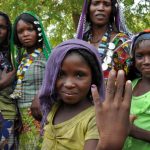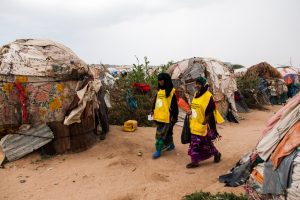
© GPEI
Fast Facts
Population: 80M (2018)
- Polio Status: Outbreak
- Polio added to the vaccine schedule: 1980 (OPV), 2015 (IPV)
- OPV3 Coverage: 67% (2018)
- IPV Coverage: 52% (2018)
Timeline
1988
The World Health Assembly passes a resolution to eradicate polio by the year 2000, launching the Global Polio Eradication Initiative.
1996
Ethiopia joins the GPEI following the Declaration on Polio Eradication in Africa. That same year, the first National Immunization Days (NIDs) are conducted targeting 2.5 million children in major cities.
2005
Ethiopia declares polio a public health emergency and conducts two rounds of nationwide polio campaigns in April and May.
2014
The last case of wildpoliovirus type 1 is reported, following an outbreak in 2013 and subsequent rounds of supplementary immunization activities including house-to-house campaigns.
2016
Ethiopia establishes a series of governance structures, including the National Immunization Technical Advisory Group (NITAG), Polio Transition Legacy Committee, and develops teh National Polio Outbreak Preparedness and Response Plan.
2017
The African Regional Certification Commission recognized Ethiopia's success in attaining polio-free status for four consecutive years.
2019
In May of 2019, a circulating vaccine-derived poliovirus (cVDPV) type 2 case is detected in Somali region.
Country Data
In 2019, Ethiopia was reclassified from a “key at-risk” to an “outbreak” country by the GPEI after confirmation of an isolated cVDPV2 virus associated with an ongoing outbreak in the Horn of Africa, and the presence of cVDPV3, both in the Somali region. The last case of wild poliovirus (WPV) in Ethiopia was in the Somali region in 2014. Though immunization coverage and other child health indicators have improved significantly over the last few decades, stark regional inequities in immunization coverage and the country’s location in the “wild poliovirus importation belt” (a band of countries in Africa which are recurrently re-infected) have made Ethiopia susceptible to the reemergence of poliovirus.
At the national level, the polio program is coordinated by the Maternal Child Health and Nutrition Directorate within the Federal Ministry of Health (FMoH) which works with the Interagency Coordination Committee (ICC) to manage polio eradication activities. Implementation of immunization services is conducted through Expanded Program on Immunization (EPI) structures across the federal, regional, zonal, woreda, and kebele levels of the health system, with additional support and coordination mechanisms for polio-related activities at the subnational level. Since 2009, surveillance functions in Ethiopia have been managed separately from the FMoH by the Centre of Public Health Emergency Management (PHEM) based at the Ethiopian Public Health Institute (EPHI). Polio eradication is primarily funded by external partners in Ethiopia, though Ethiopia has seen a significant ramp down of GPEI funds between 2016 and 2020.
Organization Description
The School of Public Health (formerly Department of Community Health) was founded in 1964 to train and equip medical practitioners with public health thinking and practice. The School aims to serve as a regional center of public health excellence and is dedicated to the education of public health professionals; to the discovery, application, and dissemination of new knowledge; and the promotion of health and prevention of diseases in Ethiopia by assisting governmental, non-governmental, and international agencies in policy development, planning, implementation, and evaluation of public health programs.
Page updated on: 19/09/2020
Key Documents
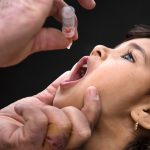
What can over 30 years of efforts to eradicate polio teach us about global health?
View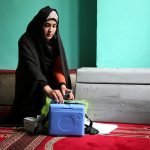
Synthesis and translation of research and innovations from polio eradication (STRIPE): initial findings from a global mixed methods study
View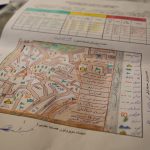
Sampling method for surveying complex and multi-institutional partnerships: lessons from the Global Polio Eradication Initiative
View